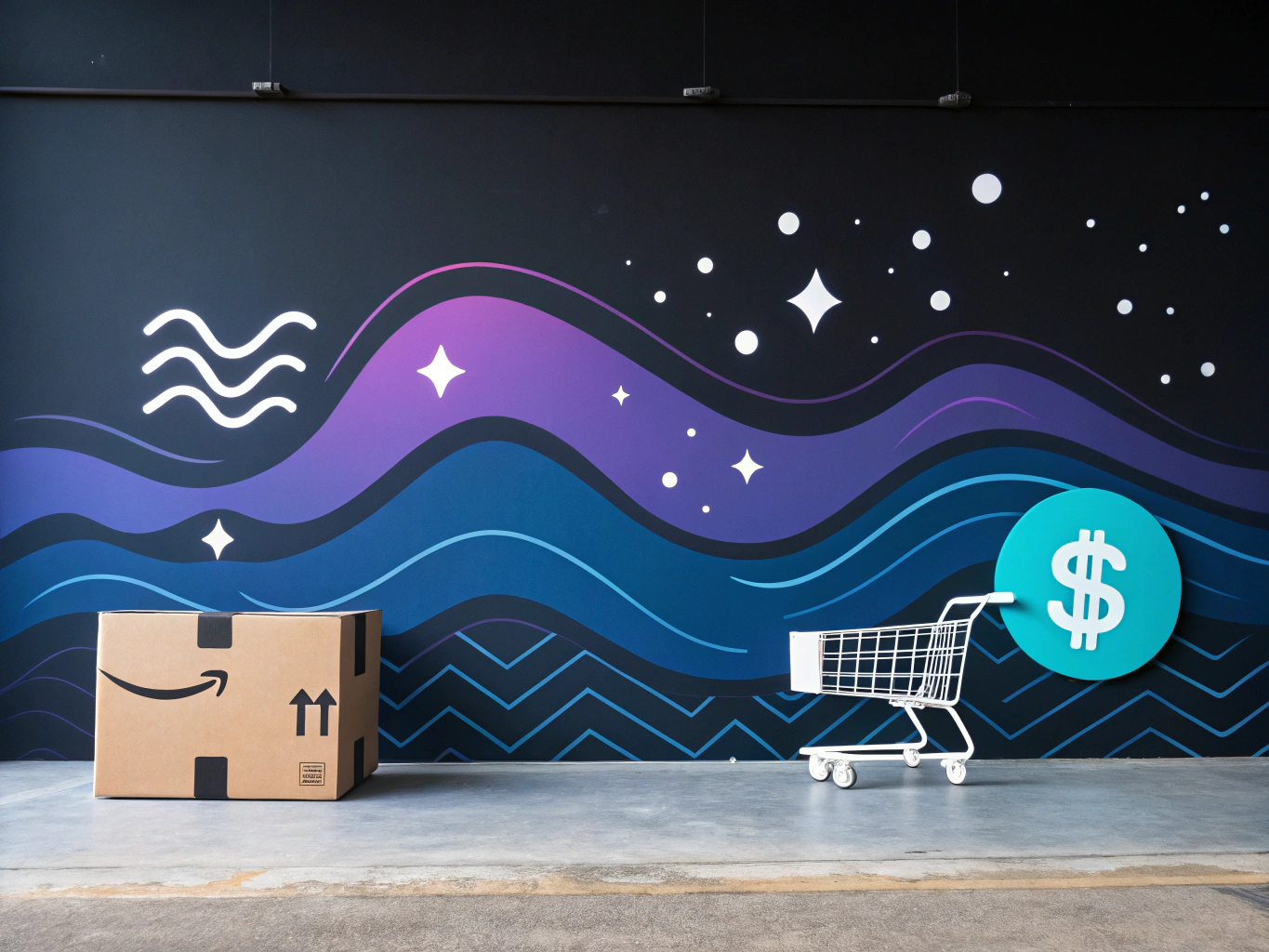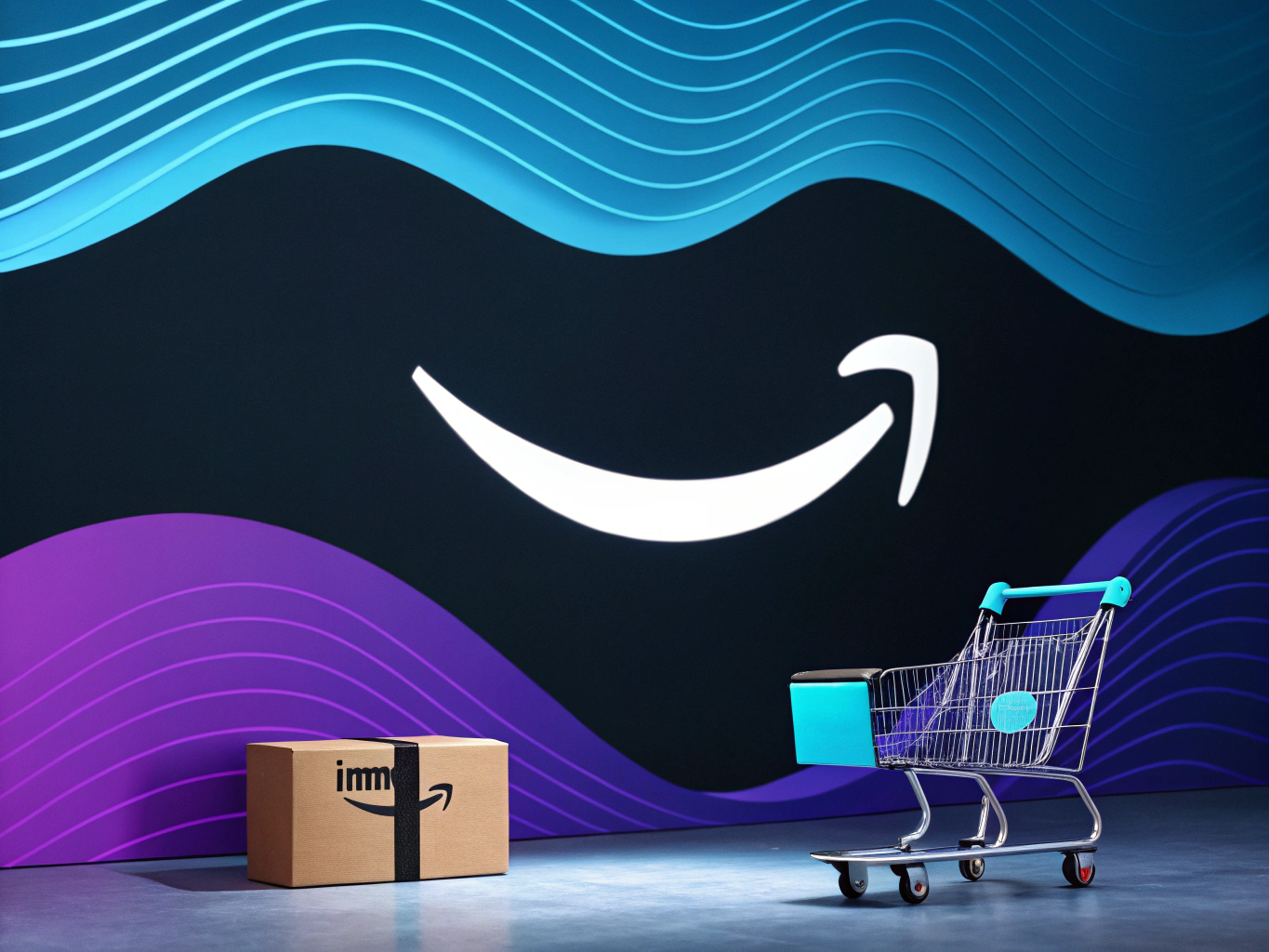Let’s cut through the noise: selling stuff on Amazon isn’t the get-rich-quick scheme that YouTube gurus love to pitch. But it’s not a closed door either. With over 300 million active customers and $514 billion in sales last year, Amazon remains the heavyweight champion of ecommerce—and that’s exactly why figuring out how to sell stuff on Amazon matters more than ever.

Here’s the thing though: most sellers approach Amazon like it’s 2015, wondering how to sell on Amazon for free or dreaming about passive income from random products. That strategy died faster than MySpace. In 2024, success on Amazon requires something different—a strategic approach that balances automation with authenticity, data with differentiation.
How Do You Sell Stuff on Amazon: The Real Deal

First off, let’s address the elephant in the room: Is Amazon free to sell stuff? Well, that’s like asking if running a restaurant is free because you have a kitchen. Technically, you can start selling on Amazon with the Individual plan for $0.99 per sale, but that’s like bringing a spoon to a gunfight.
The Professional account ($39.99/month) is where the real game happens. Think of it as your entrance fee to the world’s biggest digital mall. But here’s what the “make money quick” crowd won’t tell you: that’s just the beginning of your investment journey.
Setting Up Shop: More Than Just Clicking ‘Start Selling’
Creating an amazon seller account is like getting your driver’s license—there’s a process, and yes, you’ll need some paperwork. You’ll need:
- Government-issued ID (passport or driver’s license)
- Bank statements (they’re serious about verification)
- Tax information (because Uncle Sam always gets his cut)
- A business email that doesn’t scream “temporary hustler”
The Amazon Seller Central Maze: Your New Best Frenemy
Learning how to sell products on Amazon starts with mastering Seller Central—Amazon’s backend system that’s simultaneously brilliant and maddening. It’s like trying to pilot a spacecraft with a manual written by technical writers who never actually used the spacecraft.
Understanding Amazon’s Fulfillment Options
When it comes to how to sell your products on Amazon, you’ve got two main paths: Fulfillment by Amazon (FBA) and Fulfillment by Merchant (FBM). Think of FBA as hiring Amazon to be your warehouse manager, shipping department, and customer service team all in one. Sure, it costs more, but it’s like having a full-time staff without the HR headaches. For more details, check out Fulfillment by Amazon.
FBM, on the other hand, is the DIY approach. You handle everything yourself. It’s cheaper upfront but demands more time and infrastructure. For those wondering how to sell on Amazon without inventory, there’s dropshipping—but let me tell you, that’s a whole other beast with its own set of challenges.
The Real Cost of Selling on Amazon
How much does it cost to sell on Amazon? Let’s break it down without the sugar coating:
- Professional account: $39.99/month
- FBA fees: Roughly 15-35% of your sale price
- Referral fees: 8-15% depending on category
- Storage fees: Variable, but they add up fast
- PPC advertising: Plan for 10-30% of revenue initially
Is it worth selling on Amazon? That depends on your margins and strategy. If you’re trying to sell generic products with 10% margins, you’re basically working for free. The real money is in building a brand that stands out—something that makes customers choose your product over the sea of alternatives. For more guidance, read this beginner’s guide.
Como Vender en Amazon: The International Opportunity
Here’s something most sellers miss: Amazon isn’t just an American playground anymore. The international markets, especially Latin America, are growing faster than a Tesla stock split. Understanding como vender en amazon (how to sell on Amazon in Spanish markets) could be your competitive advantage.
The beauty of Amazon’s ecosystem is that once you know how to create an amazon store in one market, expanding to others becomes significantly easier. The platform’s basic architecture remains the same—it’s the cultural nuances and market preferences that require adaptation.
But here’s the kicker: success on Amazon in 2024 isn’t just about checking boxes and following rules. It’s about understanding the platform’s AI-driven algorithms, leveraging data analytics, and building a brand that resonates with real humans. The days of amazon resell arbitrage as a viable long-term strategy are numbered. The future belongs to sellers who can build authentic connections with their customers while mastering the technical aspects of the platform.
Setting Up Your Amazon Seller Account: The Foundation of Your FBA Empire
Look, I’ve helped dozens of brands transition from traditional retail to Amazon, and here’s the thing – the platform isn’t just another sales channel. It’s an ecosystem with its own rules, culture, and (sometimes frustrating) quirks. Think of it like moving to a new country – you need the right paperwork, you need to learn the language, and you definitely need to understand the local customs.
So how do you sell stuff on Amazon without getting lost in the maze? Let’s break it down into digestible chunks, starting with the most crucial decision you’ll make: choosing your seller account type.
Individual vs. Professional: The Fork in the Road
Here’s where most newcomers get stuck – they overthink this choice like it’s a marriage proposal. It’s not. Think of it more like choosing between a bicycle and a car. Both will get you there, but they serve different purposes.
Individual accounts ($0.99 per sale) are perfect if you’re testing the waters or selling less than 40 items monthly. It’s like dipping your toes in the pool before diving in. Professional accounts ($39.99/month) unlock the full suite of tools – think bulk listing capabilities, advanced analytics, and advertising options. Plus, if you’re selling more than 40 items monthly, the math works in your favor.
How Do You Actually Start Selling on Amazon?

The registration process isn’t exactly rocket science, but it does require attention to detail. You’ll need:
- Government-issued ID (passport or driver’s license)
- Bank account statements
- Tax information (EIN if you’re a business, SSN if you’re flying solo)
- A working phone number (they’re big on verification)
The Secret Sauce: Product Selection
Here’s where things get interesting – and where most sellers either make it or break it. You can’t just list random products and expect them to sell. The “how to sell products on Amazon” question isn’t just about logistics; it’s about psychology.
I’ve seen too many sellers jump into saturated markets with me-too products, wondering why they’re not making sales. Instead, use tools like Helium10 or Jungle Scout to identify niches with:
- High demand (1000+ monthly sales)
- Reasonable competition (less than 1000 reviews on top listings)
- Healthy margins (aim for 30-40% after all fees)
Creating Listings That Actually Convert
Your product listing is like your digital storefront. And just like a physical store, first impressions matter. A lot. Here’s what most guides won’t tell you about how to sell your products on Amazon: it’s not just about keywords – it’s about storytelling.
Yes, you need optimized titles that include your main keywords. But more importantly, you need to craft a narrative that connects with your potential buyers. Your bullets should read like a conversation, not a spec sheet.
The FBA Advantage: Why It’s Worth Considering
Now, let’s talk about Fulfillment by Amazon (FBA). If you’re wondering how to sell on Amazon without inventory headaches, this is your answer. Think of FBA as hiring Amazon to be your warehouse manager, shipping department, and customer service team all in one.
Sure, the fees might seem steep at first glance. But consider this: FBA products are Prime-eligible, which means they’re more likely to win the Buy Box. And in the Amazon game, the Buy Box is everything – it’s like having the best spot in a mall during holiday season. Explore more on this topic with Shopify’s guide to selling on Amazon.
Understanding Amazon’s Fee Structure
Is Amazon free to sell stuff? Well, not exactly. Beyond the account fees, you’re looking at:
- Referral fees (typically 8-15% of sale price)
- FBA fees (if you choose this route)
- Storage fees (which increase during Q4)
- Optional advertising costs
But here’s the thing – these fees are predictable. Use Amazon’s FBA calculator before listing any product. If the numbers don’t work, move on. There’s no point in selling products that don’t generate profit, no matter how cool they might be.
The Power of Brand Registry
Want to know how to create an Amazon store that stands out? Brand Registry is your golden ticket. It’s like getting a VIP pass to exclusive features: A+ Content, Sponsored Brands, and better protection against counterfeiters.
The process requires a registered trademark, which takes time and money. But if you’re serious about building a lasting Amazon business, it’s an investment worth making. Think of it as building a moat around your castle – it gives you protection and privileges that other sellers can’t access.
Remember, selling on Amazon isn’t just about listing products – it’s about building a sustainable business. The platform rewards sellers who think long-term, maintain high performance metrics, and consistently deliver value to customers. In the next section, we’ll dive into advanced strategies for scaling your Amazon business and staying ahead of the competition.
Marketing Your Amazon Store for Maximum Visibility
Look, I’ve seen countless sellers nail their product listings and pricing strategies, only to watch their stores collect digital dust. Why? Because they’re treating Amazon like it’s still 2015 – when you could just list stuff and watch the sales roll in.
Here’s the thing about how to sell stuff on Amazon in 2024: visibility is everything. And just like how Netflix’s algorithm decides what shows up on your homepage, Amazon’s A9 algorithm determines whether your products get seen or sink into the vast ocean of listings.
Mastering Amazon PPC (Without Bleeding Money)
Think of Amazon PPC like dating apps – you’ve got to pay to play, but throwing money around randomly won’t get you results. Start with auto-campaigns to gather data (like going on a few casual dates), then use that intel to build targeted manual campaigns (getting serious about who you match with).
I typically recommend new sellers allocate 25-30% of their target profit margin to PPC initially. Yes, it sounds steep. But here’s the secret most “Amazon gurus” won’t tell you: those early advertising dollars aren’t just about sales – they’re buying data that’ll fuel your entire strategy.
External Traffic: Your Secret Weapon
Want to know how to sell products on Amazon without relying solely on their ecosystem? Build your own traffic streams. I’ve seen brands crush it by creating TikTok content showing their products in action, or running targeted Pinterest campaigns for visual products.
Here’s a quick win: start a simple email list. For every 100 external visitors you bring to your Amazon listing, Amazon’s algorithm gives you a little boost. It’s like having a friend vouch for you at a party – suddenly, you’re not just another face in the crowd.
Scaling Your Amazon Business (Without Losing Your Mind)

I love how everyone talks about scaling their Amazon business like it’s just pushing a “grow bigger” button. The reality? It’s more like trying to upgrade your computer while still using it – one wrong move and everything crashes.
Inventory Management That Actually Works
Here’s the brutal truth about how to sell on Amazon without inventory headaches: you need systems. Not fancy software (though that helps), but actual processes. I learned this the hard way after running out of stock during Black Friday 2022 – a mistake that cost me about $40K in lost sales.
Create a simple reorder formula: (Average daily sales × Lead time) + (Safety stock × 1.5). Adjust that 1.5 multiplier based on your risk tolerance and cash flow. It’s not perfect, but it’s better than playing inventory roulette.
Building Your Dream Team
You know what’s funny about learning how to open an Amazon store? Everyone focuses on the technical stuff, but nobody talks about the human element. As someone who tried being a one-person army for two years, let me save you some grief: delegate early.
- Customer Service: Hire when you hit 20+ daily messages
- PPC Management: Outsource once you’re spending $5000+/month
- Listing Optimization: Get a specialist when you have 10+ products
Future-Proofing Your Amazon Business
Como vender en Amazon successfully in the long term? Think like a chess player, not a checkers champion. The game is changing faster than ever, and the sellers who survive aren’t just the ones with the best products – they’re the ones who can adapt.
Embracing AI and Automation
AI isn’t just coming to Amazon – it’s already here. From pricing optimization to inventory forecasting, the sellers who learn to leverage these tools will have an unfair advantage. And no, you don’t need to be a tech wizard. Start small: use tools like ProductScope AI for listing optimization and competitive analysis.
Sustainability and Brand Building
Want to know how to sell your products on Amazon for the long haul? Build a brand that stands for something. The days of generic white-label products are numbered. Customers increasingly care about sustainability, transparency, and brand values.
Consider this: brands with clear sustainability messaging saw 5.6x higher growth rates in 2023. That’s not just feel-good marketing – it’s business sense.
Final Thoughts: The Real Cost of Success
Is Amazon free to sell stuff? Technically, you can start with just the individual seller plan. But the real question isn’t about the initial cost – it’s about the investment required for success.
Here’s my honest take after 7 years in this game: expect to invest $3000-5000 minimum to launch properly. Yes, some people start with less. Yes, some people need more. But this range gives you enough runway to actually test and validate your business model.
The good news? Amazon’s marketplace is still growing. Despite what the doomsayers claim, there’s plenty of opportunity for sellers who approach this strategically. The key is understanding that success on Amazon isn’t about gaming the system – it’s about building a real business that happens to use Amazon as a platform.
Remember: Amazon is a marathon, not a sprint. Take the time to build strong foundations, focus on sustainable growth, and always keep one eye on the horizon. The sellers who succeed in 2024 and beyond won’t be the ones with the biggest budgets – they’ll be the ones who understand that adaptability and customer focus are the real keys to long-term success.
👉👉 Create Photos, Videos & Optimized Content in minutes 👈👈
Related Articles:
- Mastering the Product Opportunity Explorer: What to Know
- What Does Amazon Choice Mean? A Simple Guide 2024
- Sell Books to Amazon for Cash: A Quick Start Guide – ProductScope AI
Frequently Asked Questions
Is Amazon free to sell stuff?
Selling on Amazon isn’t entirely free. While you can create an account at no cost, Amazon charges fees based on the selling plan you choose. Individual sellers pay $0.99 per item sold, while Professional sellers pay a monthly subscription fee of $39.99, plus additional selling fees that vary by category.
How can I sell my items on Amazon?
To sell your items on Amazon, you need to create a seller account, choose a selling plan, and list your products. You can either select the Individual plan for casual selling or the Professional plan for a more commercial approach. Once registered, you can list your products by providing detailed information, including descriptions and pricing, and then manage your sales through Amazon’s Seller Central.
How do I start selling on Amazon?
Starting to sell on Amazon involves registering for a seller account, choosing a suitable selling plan, and listing your products. You need to provide some business and tax information during registration. After setting up your account, you can list products by uploading their details and images, and then manage orders, track sales, and communicate with customers via Amazon’s Seller Central platform.
How much does it cost to sell on Amazon?
The cost of selling on Amazon depends on the selling plan and the categories of items you’re selling. Individual sellers incur a $0.99 fee per item sold, while Professional sellers pay a $39.99 monthly subscription fee. Additionally, there are referral fees, which are a percentage of the sale price, and may vary depending on the product category.
Is it worth selling on Amazon?
Selling on Amazon can be highly profitable due to its massive customer base and global reach. It offers convenience and access to a vast marketplace, though it requires careful consideration of fees and competition. Success on Amazon often depends on effective product selection, competitive pricing, and robust customer service.
About the Author
Vijay Jacob is the founder and chief contributing writer for ProductScope AI focused on storytelling in AI and tech. You can follow him on X and LinkedIn, and ProductScope AI on X and on LinkedIn.
We’re also building a powerful AI Studio for Brands & Creators to sell smarter and faster with AI. With PS Studio you can generate AI Images, AI Videos, Chat and Automate repeat writing with AI Agents that can produce content in your voice and tone all in one place. If you sell on Amazon you can even optimize your Amazon Product Listings or get unique customer insights with PS Optimize.
🎁 Limited time Bonus: I put together an exclusive welcome gift called the “Formula,” which includes all of my free checklists (from SEO to Image Design to content creation at scale), including the top AI agents, and ways to scale your brand & content strategy today. Sign up free to get 200 PS Studio credits on us, and as a bonus, you will receive the “formula” via email as a thank you for your time.
